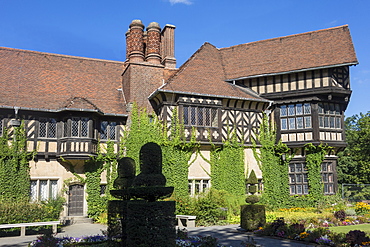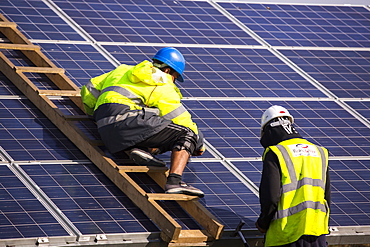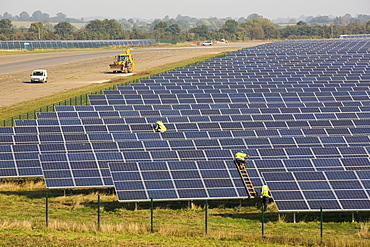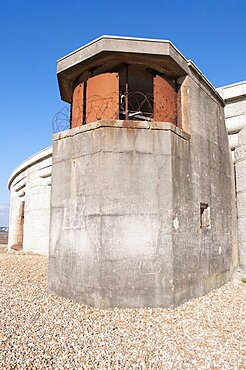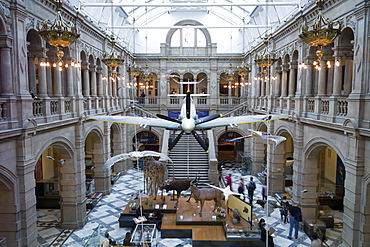Recent searches
Loading...
1184-2759 - Museum of the Second World War, Gdansk, Poland, Europe
1297-266 - The Monument to the Women of World War II, in Whitehall, Westminster, London, England, United Kingdom, Europe
450-4369 - Internal courtyard of Zwinger Palace, completely rebuilt after World War 2 bombings, Dresden, Saxony, Germany, Europe
450-4370 - Internal courtyard of Zwinger Palace, completely rebuilt after World War 2 bombings, Dresden, Saxony, Germany, Europe
1272-142 - German Observation Tower from World War Two, Guernsey, Channel Islands, United Kingdom, Europe
1188-921 - Statue of Lenin and World War II liberation soldiers in Nizhny Novgorod on the Volga River, Russia, Europe
1199-474 - Man o War Cove, Jurassic Coast, UNESCO World Heritage Site, Dorset, England, United Kingdom, Europe
450-4283 - Latvian Riflemen Monument, Soviet statue commemorating fighters in the First World War, in square bearing its name, Riga, Latvia, Europe
385-1779 - Tourists walk across Castle Square Plac Zamkowy, site of Sigismund's Column and Royal Castle, Old Town rebuilt after World War II, UNESCO World Heritage Site, Warsaw, Poland, Europe
385-1778 - Tourists walk across Castle Square Plac Zamkowy, site of Sigismund's Column and Royal Castle, Old Town rebuilt after World War II, UNESCO World Heritage Site, Warsaw, Poland, Europe
385-1777 - Tourists walk across Castle Square Plac Zamkowy, site of Sigismund's Column and Royal Castle, Old Town rebuilt after World War II, UNESCO World Heritage Site, Warsaw, Poland, Europe
385-1764 - Soviet monument to the Crossing of the Dnieper at Museum of The History of Ukraine in World War II, Kiev, Ukraine, Europe
385-1765 - Soviet monument to the Crossing of the Dnieper and The Motherland Monument at Museum of The History of Ukraine in World War II, Kiev, Ukraine, Europe
746-87994 - Emplacements of the Austrian forces during World War 1 at Mount Lagazuoi in the Dolomites, now preserved as a museum. The peakds of the Tofane in the background. The Dolomites are listed as UNESCO World heritage. europe, central europe, italy, october
746-87993 - Emplacements of the Austrian forces during World War 1 at Mount Lagazuoi in the Dolomites, now preserved as a museum. The peaks of the Tofane in the background. The Dolomites are listed as UNESCO World heritage. europe, central europe, italy, october
1113-102253 - Topography of Terror and Berlin Wall, Documentation Center of Nazi Terror, Berlin Wall, Berlin, Germany
746-37630 - World War II Normandy American Cemetery and Memorial, Normandy, France, Europe
746-77463 - Monument for second World War Commonwealth aircrew, Floriana. Malta. Europe.
1116-39237 - Commemoration of Soviet Armenia's participation in the second World War and monumental statue of Mother Armenia in Victory Park, Yerevan, Armenia
306-4409 - Schloss Cecilienhof, scene of the 1945 Conference at the end of World War II, Potsdam, Brandenburg, near Berlin, Germany, Europe
1167-863 - Atomic Bomb Dome, UNESCO World Heritage Site, Hiroshima, Japan, Asia
1184-109 - World War I Memorial, Lilongwe, Malawi, Africa
911-10750 - The Remains of the Godwin battery on the beach at Kilnsea at the head of Spurn point on Yorkshires East Coast, UK. Initially constructed during the First World War, the Godwin Battery was added to during the Second World War. It comprised of gun emplacements, search light, barracks, officers’ mess, and a hospital. This section of coastline is the fastest eroding coastline in Europe. The soft boulder clay cliffs are easily eroded and have been eroding since Roman Times, but recently the climate change impacts of increased stormy weather, increased heavy rainfall events and sea level rise have accelerated the rate of erosion. The average rate of attrition is 1.5metres per year, last year it was 5 metres.
911-10774 - Technicians work on Wymeswold Solar Farm the largest solar farm in the UK at 34 MWp, based on an old disused second world war airfield, Leicestershire, UK. It contains 130,000 panels and covers 150 acres.
911-10773 - Wymeswold Solar Farm the largest solar farm in the UK at 34 MWp, based on an old disused second world war airfield, Leicestershire, UK. It contains 130,000 panels and covers 150 acres.
911-10749 - The Remains of the Godwin battery on the beach at Kilnsea at the head of Spurn point on Yorkshires East Coast, UK. Initially constructed during the First World War, the Godwin Battery was added to during the Second World War. It comprised of gun emplacements, search light, barracks, officers’ mess, and a hospital. This section of coastline is the fastest eroding coastline in Europe. The soft boulder clay cliffs are easily eroded and have been eroding since Roman Times, but recently the climate change impacts of increased stormy weather, increased heavy rainfall events and sea level rise have accelerated the rate of erosion. The average rate of attrition is 1.5metres per year, last year it was 5 metres.
911-10772 - Wymeswold Solar Farm the largest solar farm in the UK at 34 MWp, based on an old disused second world war airfield, Leicestershire, UK. It contains 130,000 panels and covers 150 acres.
911-10486 - Second World war defences that for a long time were buried under the storm beach are revealed after the December 2013 storm surge at Cley on the North Norfolk coast, UK. The huge waves completely breached the storm beach, and pushed it inland onto the Cley nature reserve.
911-10608 - Traditional hay meadows at the head of the Langdale valley, Lake District, UK, are some of the best wild flower hay meadows left in the country. Since the second world war, Britian has lost over 95% of its traditional hay meadows, as farmers have converted to silage.
911-10074 - A Second world War lookout post leaning alarmingly and about to tumble over the edge of the cliff near Aldbrough on Yorkshires East Coast, UK. The coast is composed of soft boulder clays, very vulnerable to coastal erosion. This section of coast has been eroding since Roman times, with many villages having disappeared into the sea, and is the fastest eroding coast in Europe. Climate change is speeding up the erosion, with sea level rise, increased stormy weather and increased heavy rainfall events, all playing their part.
797-10858 - England, Hampshire, Milford on Sea, Second world war defences at Hurst Castle to defend the strategically important Solent.
797-12179 - USA, Washington DC, National Mall, National World War 2 Memorial, Plaza with Northern Triumphal Arch.
797-10859 - England, Hampshire, Milford on Sea, Second world war defences at Hurst Castle to defend the strategically important Solent.
797-12181 - USA, Washington DC, National Mall, National World War 2 Memorial, Two of the memorial's granite pillars.
797-12178 - USA, Washington DC, National Mall, National World War 2 Memorial, Plaza with fountains and granite pillars.
797-12180 - USA, Washington DC, National Mall, National World War 2 Memorial, Northern Triumphal Arch.
797-12096 - Germany, Berlin, Schlossplatz, Humboldt Box, Information museum on the re-construction of Berlin City Palace which was damaged in World War 2 and razed by the GDR.
797-12054 - Germany, Berlin, Potzdamer Platz, Sony Centre, Preserved Kaisersaal from the Hotel Esplanade which was mostly destroyed in World War 2.
797-12177 - USA, Washington DC, National Mall, National World War 2 Memorial, Southern Triumphal Arch.
367-5976 - Ceramic poppies forming the installation Blood Swept Lands and Seas of Red to remember the Dead of the First World War, Tower of London at dusk, London, England, United Kingdom, Europe
367-5977 - Ceramic poppies forming the installation Blood Swept Lands and Seas of Red to remember the Dead of the First World War, Tower of London, London, England, United Kingdom, Europe
851-572 - Blood Swept Lands and Seas of Red installation at The Tower of London marking 100 years since the First World War, Tower of London, UNESCO World Heritage Site, London, England, United Kingdom, Europe
851-574 - Blood Swept Lands and Seas of Red installation at The Tower of London marking 100 years since the First World War, London, England, United Kingdom, Europe
851-573 - Shadows of people viewing Blood Swept Lands and Seas of Red installation at The Tower of London marking 100 years since the First World War, London, England, United Kingdom, Europe
851-571 - Blood Swept Lands and Seas of Red installation at The Tower of London marking 100 years since the First World War, London, England, United Kingdom, Europe
1112-2326 - The fountains and sculpture of the World War II Memorial lit up at night, Washington D.C., United States of America, North America
1112-2325 - The Washington Monument lit up at night as seen from the World War II Monument, Washington D.C., United States of America, North America
1112-2324 - The Washington Monument lit up at night as seen from the World War II Monument, Washington D.C., United States of America, North America
1167-621 - Cannons and green hills, Brimstone Hill Fortress, UNESCO World Heritage Site, St. Kitts, St. Kitts and Nevis, West Indies, Caribbean, Central America
1167-620 - Cannon points towards the sea, with St. Eustatius in the distance, Brimstone Hill Fortress, UNESCO World Heritage Site, St. Kitts, St. Kitts and Nevis, West Indies, Caribbean, Central America
1167-622 - Cannon and green hills, Brimstone Hill Fortress, UNESCO World Heritage Site, St. Kitts, St. Kitts and Nevis, West Indies, Caribbean, Central America
1161-8374 - Visitors at Kelvingrove Art Gallery and Museum with suspended Spitfire World War II airplane exhibit on display in the West Court in Glasgow, Scotland, United Kingdom, Europe
1161-8497 - World War I and World War II memorial La Ville de Pau for dead soldiers of two World Wars with floral tributes at Pau, Pyrenees, France, Europe
1161-8505 - The beach at La Pointe du Hoc where Allied forces came ashore during World War II in Normandy, France, Europe
869-5568 - holocaust memorial in sunrise for the killed European jews in second world war Berlin Germany
869-5575 - holocaust memorial in sunrise for the killed European jews in second world war Berlin Germany
869-5574 - holocaust memorial in sunrise for the killed European jews in second world war Berlin Germany
869-5576 - holocaust memorial in sunrise for the killed European jews in second world war Berlin Germany
1160-2131 - Tower of London, Installation Blood Swept Lands and Seas of Red, World War I memorial, City of London, London, England, United Kingdom, Europe
869-5569 - holocaust memorial in sunrise for the killed European jews in second world war Berlin Germany
832-368804 - Red rose, Durnbach War Cemetery, the final resting place for 2960 soldiers who died in WW2, Duernbach, Gmund am Tegernsee, Bavaria, Germany, Europe
1167-416 - Hand's Well, Well Dressing commemorating the First World War, Tissington, Peak District National Park, Derbyshire, England, United Kingdom, Europe
1167-415 - Hand's Well, Well Dressing commemorating the First World War, Tissington, Peak District National Park, Derbyshire, England, United Kingdom, Europe
809-6247 - World War I memorial in Lille, Nord, France, Europe
832-350252 - Soviet War Memorial, Treptow, Berlin, Germany
832-350253 - Soviet War Memorial, Treptow, Berlin, Germany
832-350254 - Soviet War Memorial, Treptow, Berlin, Germany
832-350256 - Soviet War Memorial, Treptow, Berlin, Germany
832-350265 - Soviet War Memorial, Treptow, Berlin, Germany
832-350255 - Soviet War Memorial, Treptow, Berlin, Germany
832-350258 - Soviet War Memorial, Treptow, Berlin, Germany
832-350264 - Soviet War Memorial, Treptow, Berlin, Germany
832-355531 - Monument for the victims of World War II, Victory square, Bishkek (Frunse), Kyrgyzstan
816-6245 - World War memorial in Pearl Habour, Oahu, Hawaii, United States of America, Pacific
832-313877 - The wreck of a shot down military plane of World War 2, Palau, Micronesia
832-313876 - The wreck of a shot down military plane of World War 2, Palau, Micronesia
1161-8351 - World War One Monument to the Sons of Verdun in Verdun, Meuse, Lorraine, France, Europe
1161-8352 - World War One Monument to the Sons of Verdun in Verdun, Meuse, Lorraine, France, Europe
733-6130 - The Wolfs Lair, Hitler's World War II secret bunker, Bunker 13 (Hitler's bunker), Masuria, Poland, Europe
733-6129 - The Wolfs Lair, Hitler's World War II secret bunkers, Masuria, Poland, Europe
829-1926 - Surfers and the remains of World War II blockhouses on Le Pin Sec beach in the Aquitaine region of southwestern France, Europe
832-306873 - Commemorative cemetery for monks and nuns murdered in WWII, Alexishafen, Madang, Papua New Guinea, Melanesia
832-305103 - Soviet War Memorial, Treptow, Berlin, Germany
832-305102 - Soviet War Memorial, Treptow, Berlin, Germany
832-305104 - Soviet War Memorial, Treptow, Berlin, Germany
832-302721 - Three crosses, soldier's cemetery, Maleme, Crete, Greece
832-297349 - Propaganda for the 60th anniversary of Russian victory in World War II, St. Petersburg, Russland
832-295375 - Nachimow Square, Memorial of 2. World War, Sevastopol, Crimea, Ukraine, South-Easteurope, Europe,
832-295384 - Harbour Quay with the big Memorial of 2. World War, Sevastopol, Crimea, Ukraine, South-Easteurope, Europe,
832-295387 - Sightseeing Ship near Harbour Quay with the big Memorial of 2. World War in the background, Sevastopol, Crimea, Ukraine, South-Easteurope, Europe,
832-295090 - Victory Park, National Memorial Place near to Omsk, Omsk at the Rivers of Irtisch and Omka, Omsk, Sibiria, Russia, GUS, Europe,
832-295087 - Victory Park, National Memorial Place near to Omsk, Omsk at the Rivers of Irtisch and Omka, Omsk, Sibiria, Russia, GUS, Europe,
832-294989 - Victory Park, National Memorial Place near to Omsk, Omsk at the Rivers of Irtisch and Omka, Omsk, Sibiria, Russia, GUS, Europe,
832-294988 - Victory Park, National Memorial Place near to Omsk, Omsk at the Rivers of Irtisch and Omka, Omsk, Sibiria, Russia, GUS, Europe,
832-295092 - Victory Park, National Memorial Place near to Omsk, Omsk at the Rivers of Irtisch and Omka, Omsk, Sibiria, Russia, GUS, Europe,
832-295093 - Victory Park, National Memorial Place near to Omsk, Omsk at the Rivers of Irtisch and Omka, Omsk, Sibiria, Russia, GUS, Europe,
832-295086 - Victory Park, National Memorial Place near to Omsk, Omsk at the Rivers of Irtisch and Omka, Omsk, Sibiria, Russia, GUS, Europe,
832-295088 - Victory Park, National Memorial Place near to Omsk, Omsk at the Rivers of Irtisch and Omka, Omsk, Sibiria, Russia, GUS, Europe,
849-1091 - Man Of War Cove on the Jurassic Heritage Coastline, UNESCO World Heritage Site, Dorset, England, United Kingdom, Europe
849-1092 - Man Of War cove on the Jurassic Heritage coastline. It is protected by UNESCO as a World heritage site.



















